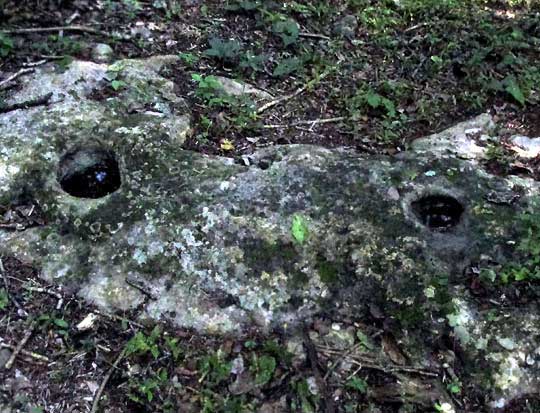Excerpts from Jim Conrad's
Naturalist Newsletter

from the December 20, 2015 Newsletter issued from Hacienda Chichen Resort beside Chichén Itzá Ruins, central Yucatán, MÉXICO
ANCIENT WASHBASIN IN THE WOODS
At an undisclosed location deep in the forest and off the trail in a place where people seldom pass, the ancient rock washbasin shown above sits where maybe someone left it centuries ago.
Notice the notch carved into the rim nearest us. Many collectors would like to have this, and even more would like to sell it, but its sheer size, weight and lack of support points keep people from carrying it out. The terrain is too irregular for a vehicle to get to, even if someone chops down trees, and it's on land protected by the Hacienda, so it just sits there. Wildlife must treasure the water it stores after rain.
All the Hacienda's land lies amid a vast assemblage of Maya ruins and artifacts; the fenced-in part the public pays to see is only a tiny part of the whole. Finding things like this is not unusual.
In fact, in the middle of a trail near the hut, there are two holes in solid limestone bedrock, shown below:

Conceivably they could be natural features but the facts that they are so similar, and located within a major ruin zone, make me believe that they must have been made by the ancient Maya. Up North I've seen similar holes in rocks where archaeologists say that nuts and grain were ground in the holes with rock pestles. Maybe in these holes the Maya ground not only corn but also the area's Ramón, or Breadnut, fruits into flour for making a heavy kind of bread, and maybe they ground into powder the toasted seeds of the big Piich tree, Enterlobium cyclocarpum, for brewing "coffee."